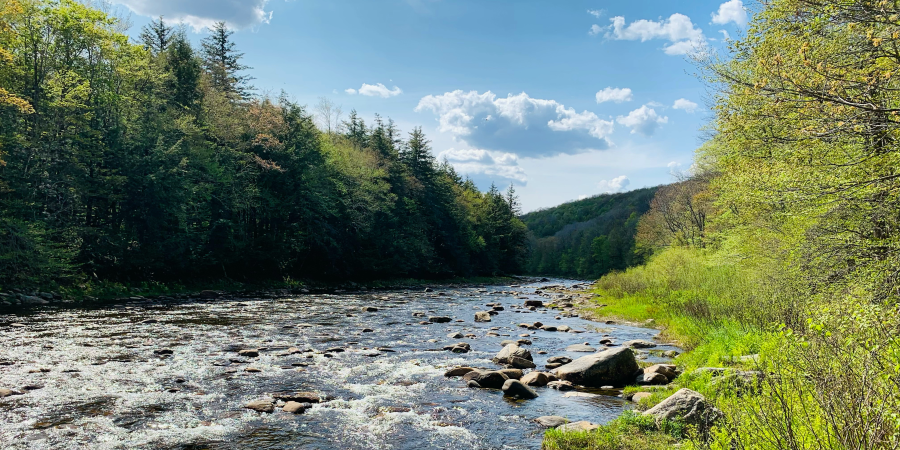Riparian buffers are vegetated areas of land situated next to bodies of water such as streams and rivers. They assist in filtering pollutants, stabilizing stream banks, and providing habitat for wildlife. Moreover, riparian buffers provide shade, which helps regulate water temperature. Many aquatic species, like brook trout, are highly sensitive to temperature changes, making a stable thermal environment critical for their survival and reproduction. A robust and healthy riparian buffer usually consists of several forest tiers. These tiers or layers play a crucial role in maintaining water quality, preventing erosion, and supporting biodiversity. At our Stream Wise property assessments, we describe these layers as canopy, understory, shrubs, groundcover, and duff. From the canopy to the duff layer, each tier hosts a unique community of plants that contribute to the overall health of the ecosystem.
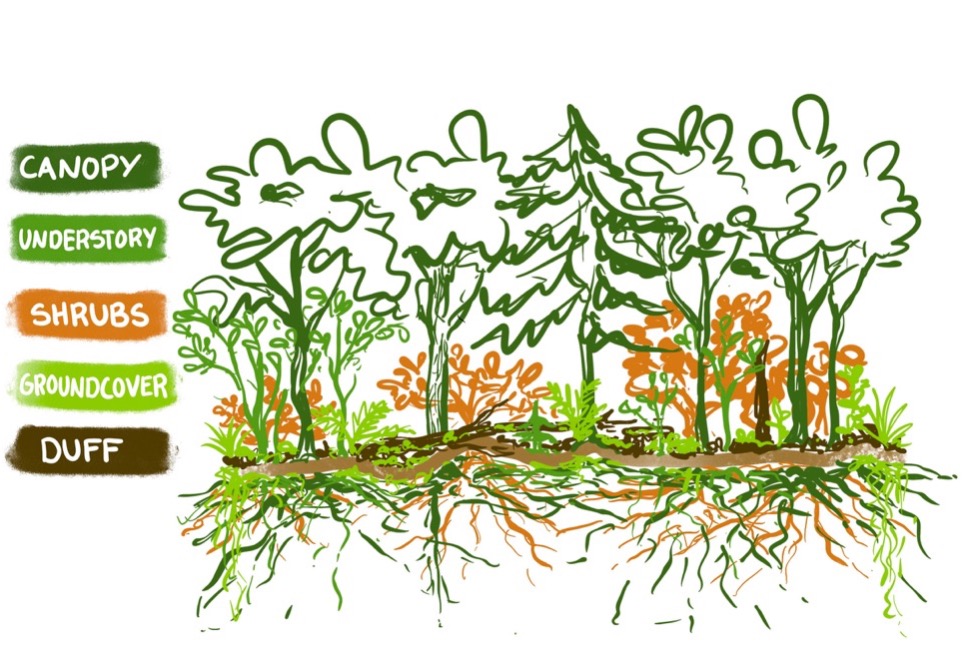
Most areas adjacent to streams, or riparian buffers, are meant to have five different forest tiers. Each tier plays a unique role in maintaining stream and forest health.
Canopy
At the highest tier, of the forest ecosystem, the canopy consists of towering mature trees that serve as the first line of defense for water quality. In our local woodlands, native species like yellow birch, white birch, silver maple, American beech, American hophornbeam, hornbeam, red oak, and black cherry are found in this layer. During the growing season, their dense foliage intercepts rainfall, reducing the impact of runoff and filtering pollutants before they reach streams and rivers. Additionally, the roots of these trees help stabilize soil, aiding in the prevention of erosion and maintaining the integrity of stream banks.
Understory
Beneath the canopy, the understory layer consists of smaller trees and saplings, poised to take over as mature trees age and eventually fall. These understory species, often mirroring those in the canopy, continue to contribute to the canopy's functions of water interception and soil stabilization. We sometimes refer to these as replacement canopy trees during Stream Wise property assessments. Their presence ensures the continuity in the forest's ability to regulate water flow, maintain water quality, and provide shade cover over time. When we find tree species in the canopy and understory threatened by invasive forest pests, such as emerald ash borer, hemlock wooly adelgid, or beech leaf disease, we inventory the presence of other trees available to fill the canopy if one or more tree species is lost. If the entire buffer consists of at-risk species, we might recommend planting additional species in the understory layer.
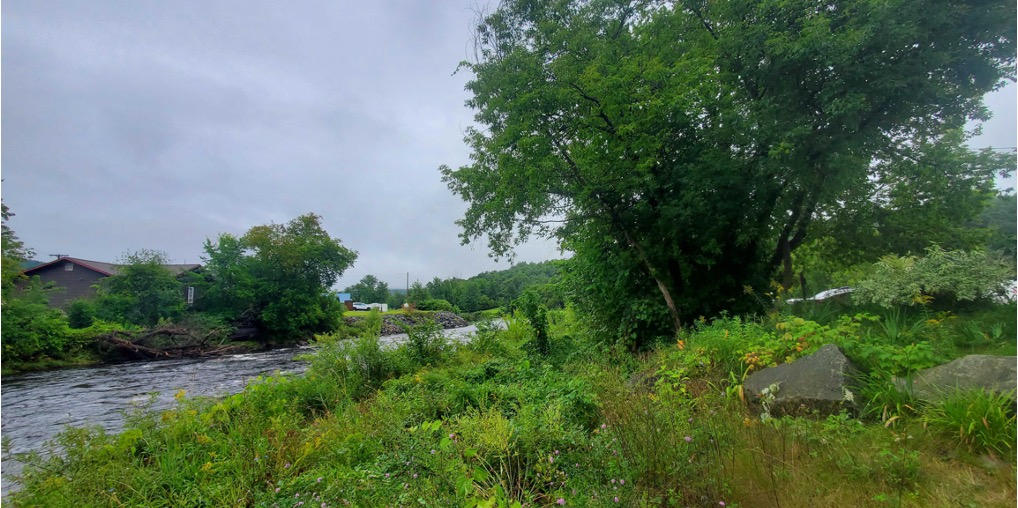
This buffer could be improved by the addition of trees such as local maples, oaks, and cherries to create canopy and understory layers.
Shrubs
Along the edges of streams and rivers, shrubs can play a critical role in creating riparian buffers. Species like Bebb’s willow, silky dogwood, hobblebush, chokecherry, striped maple, American witch hazel, ninebark, nannyberry, and speckled alder thrive in these moist environments. Many shrubs don’t grow more than 6 to 10 feet tall, and rarely get to 20 or 30 feet in height, but they are just as important as our canopy trees. These shrubs have deep root systems that assist in stabilizing stream banks, reducing normal erosion, and decreasing sedimentation. Moreover, these shrubs contribute to water quality by filtering pollutants and provide habitat for aquatic organisms and terrestrial wildlife.

Ideally, all forest tiers should abut the streamside and continue to grow outward for at least 50 feet.
Groundcover
The groundcover, or herbaceous layer, consists of ferns, flowers, and grasses that form a carpet to further protect the soil and water quality. Native species such as goldenrod, Joe Pye weed, fireweed, black-eyed Susan, bee balm, milkweed, columbine, and trillium thrive in this layer. Their extensive root systems bind soil particles, preventing erosion and enhancing water infiltration into the ground. As rainwater seeps through this layer, pollutants are filtered out, improving water clarity and quality downstream.
Duff
Finally, the duff layer plays a vital role in nutrient cycling and soil health within riparian zones. Composed of decomposing plant material, leaf litter, and organic matter, the duff layer supports a diverse community of microorganisms that break down nutrients and release them back into the soil. Sometimes the duff layer is mostly pine needles, while in other cases it’s a mix of moss, pine needles, hardwood leaf litter, and small woody debris. This nutrient-rich layer promotes the growth of riparian plants, including those in the shrub and herbaceous layers, and forms the groundwork for growing a healthy riparian buffer.
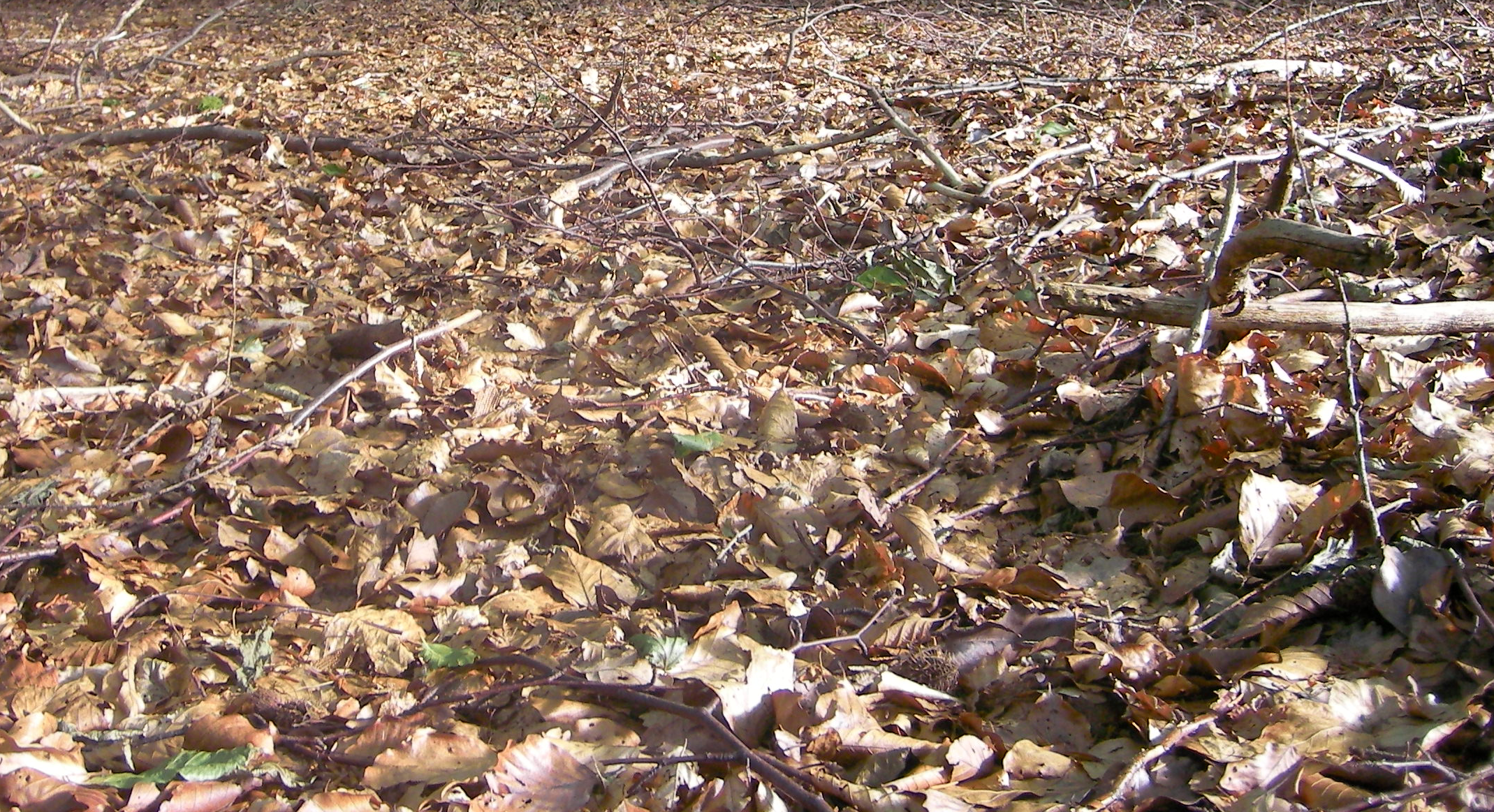
The duff layer should not be overlooked. Dead and decomposing plant material is necessary in maintaining a healthy streamside ecosystem.
Support our biodiverse habitats work for wildlife and their habitats. Give with confidence today!
Nontraditional riparian buffers
While most wild areas around streamside buffers have all five forest tiers in abundance, certain ecosystems exhibit some of the tiers sporadically, or not at all. This can be especially true for landscapes in high elevations and landscapes around certain types of waterbodies, including wetlands and mature conifer forests.

Wetlands look quite different than a typical buffer.
Wetlands are characterized as being consistently saturated with water for a portion or the entirety of the year. Marshes, swamps, and fens are all common wetland ecosystems that surround streams in the Adirondacks. Marshes are more permanently flooded than other wetlands. Many herbaceous plants thrive in very wet conditions, but woody plants cannot tolerate such conditions. Therefore, in a marsh, one can find lots of grasses and reeds with a few larger herbaceous plants scattered throughout, but there will be no canopy or understory layer. The ability of shrubs and groundcover to filter and absorb flood waters is much less than that of trees' extensive root systems, so, in this case, the wider the buffer, the better for water quality and wildlife benefits.
Contrastingly, swamps flood more infrequently and less deeply than marshes, so the top two forest tiers are prevalent across this type of wetland. Large tree-like shrubs, like willows and alders, and water-loving members of the groundcover layer, like ferns and mosses, are common. It is also possible to have some grasses and wildflowers in swamps.
Like swamps, fens contain all five forest layers. The chemical makeup of the bedrock in the Adirondacks allows for lots of mineral enrichment and nutrient exchange in fens. This results in highly productive fens which are dominated by sedges, have some trees, and grow plenty of mosses and grasses to act as ground cover.
Although the aforementioned wetlands differ in their botanical makeup, in all three ecosystems, the respective decomposing plant material acts as a duff layer.
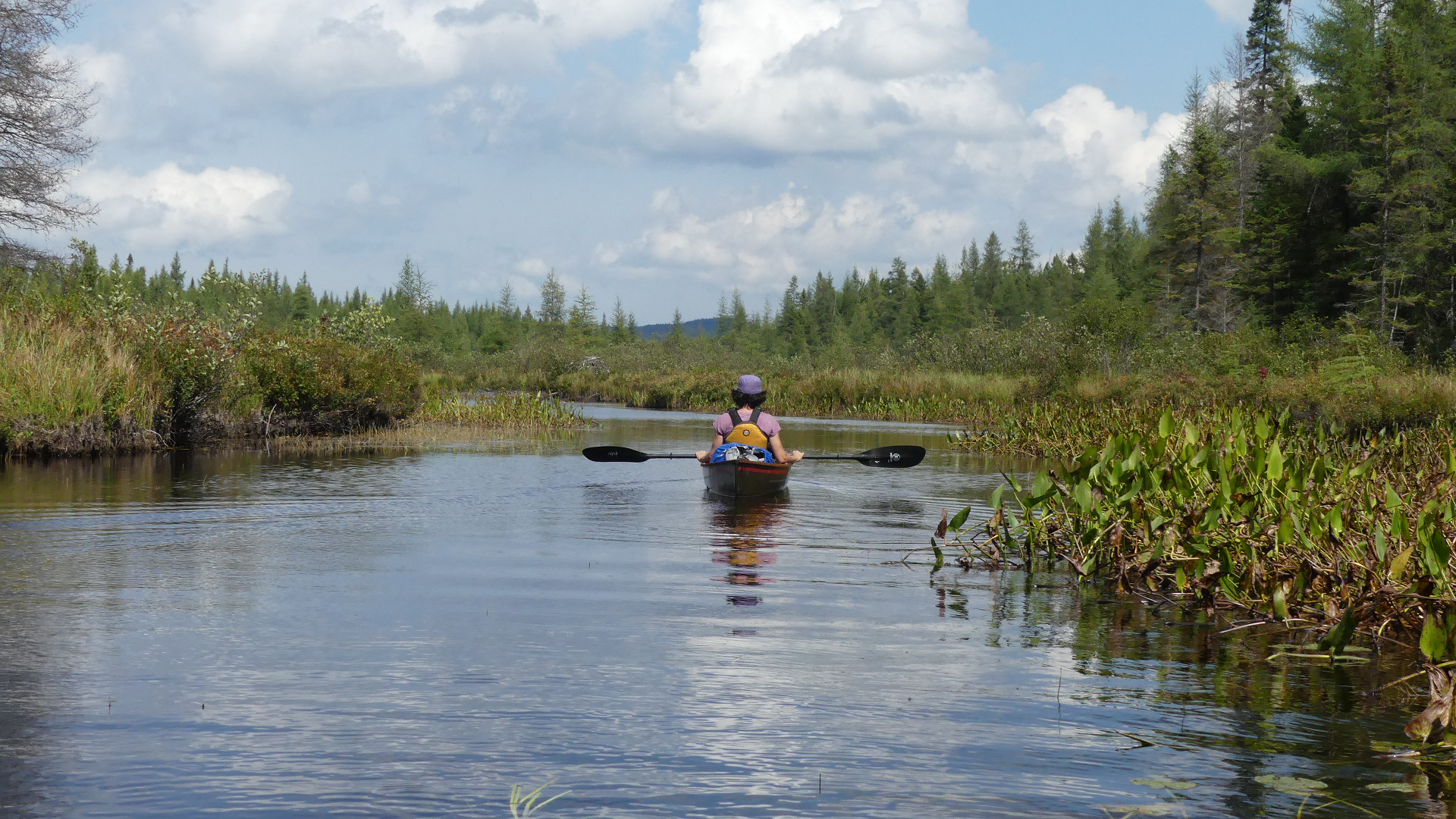
Fens can have all five forest tiers, but this wetland generally has more shrubs and groundcover than trees.
Some other types of riparian ecosystems found in the Adirondacks that do not need all five forest tiers include meadows, mature evergreen forests, and rocky ledges. Meadows are comprised almost entirely of groundcover plants and may have a few shrubs or small trees. Evergreen forests are primarily made up of spruce, hemlock, or fir trees of all life stages. These forests commonly have such a thick tall canopy that little sunlight reaches the forest floor. As a result, the lower layers are hardly present with little to no shrubs, minimal groundcover, and bare patches. Rocky ledges often have very little plant growth. In these ecosystems, it is important to maintain areas where there are grasses, lichens, and mosses providing groundcover. There may also be some saplings or mature trees where space is available. These habitats are still eligible for a Stream Wise award if they are intact and naturally occurring.

Mature conifer forests lack groundcover and shrubs.
Reestablishing missing tiers
Of all the layers, a missing canopy layer takes the longest to regenerate, but the rewards of stream stability, water quality, and wildlife benefits will be well worth the hard work and time required. If there are already saplings in your buffer, allow them to grow to full maturity, and leave any resulting seeds that fall to maintain a thick understory layer. Plan tree plantings and other vegetation to mimic natural plant communities and work to maximize diverse rooting systems and habitat niches. Prioritize regionally native plants – check out native plant resources and nearby undisturbed streamside plant communities for inspiration. Select local nurseries growing native species themselves and that are pesticide-free.
Similar to the canopy and understory layers, if there are not enough shrubs on your property, replant this tier by buying from local nurseries or cutting live stakes from healthy native shrubs on your property, propagating and planting them where they are needed. All trees and woody shrubs will need water every few days for the first year after they are planted and then every week or two for the following two to three years. Long, deep waterings are important when planting along stream sides to encourage plants to grow roots deep into the soil to help stabilize banks.

Shrubs like willows can be propagated from cuttings of healthy plants, then planted in the spring. Add mulch around the base and water often to ensure they have the best chance of success.
A lack of groundcover is generally simple to regenerate. Refraining from mowing an area is generally enough to encourage grasses and other herbaceous plants to grow. However, native seeds can be spread if revegetation of this tier does not occur naturally.
Duff is one of the easiest forest tiers to maintain as it only requires that the ground be left alone. Do not rake leaves or pine needles in your riparian buffer, and refrain from removing any dead trees or other plants to create the healthiest possible duff layer.
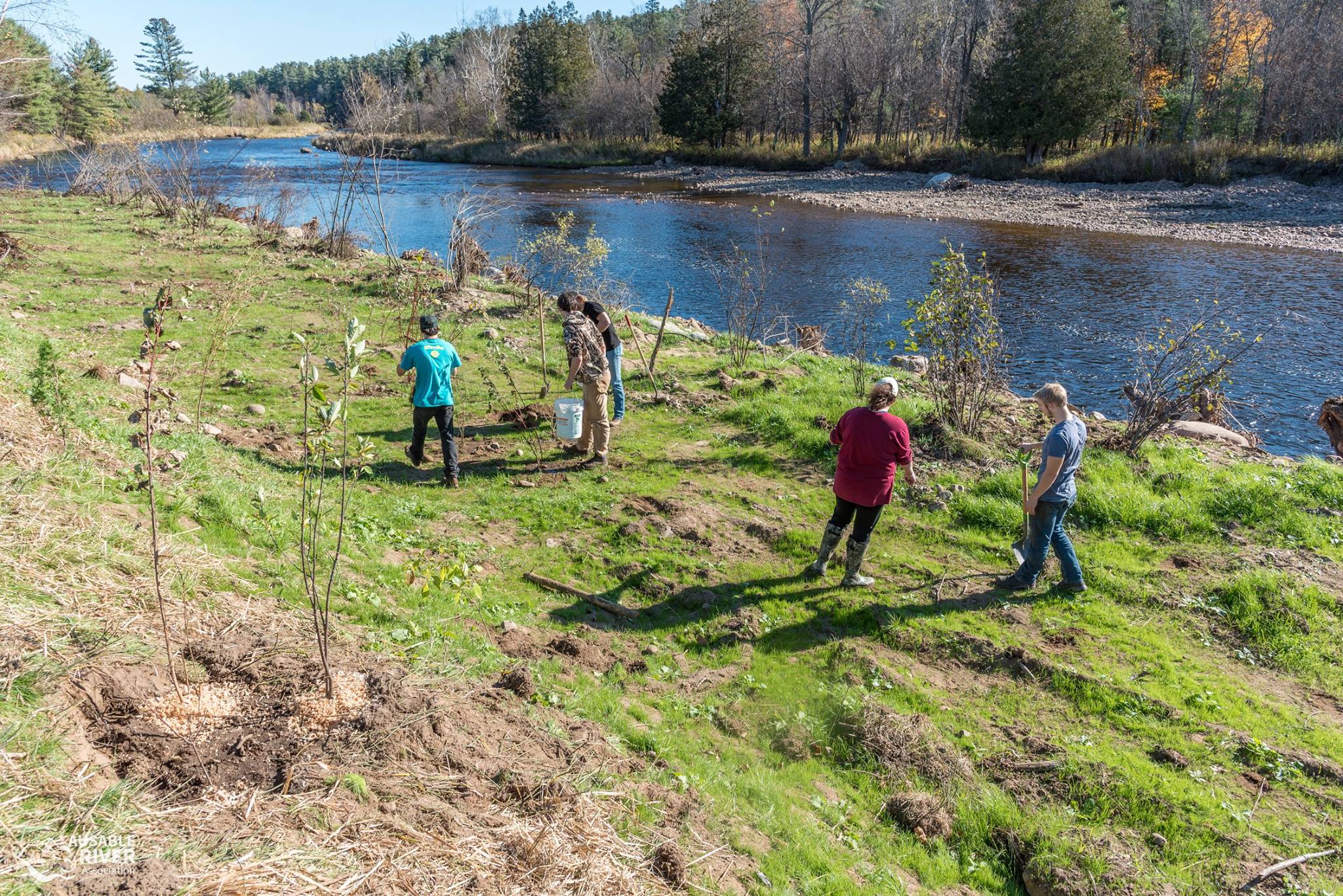
Regrowing forest tiers can be challenging, but with a little effort and patience, a strong and healthy forest can be reborn.
It’s never too late to replenish a riparian buffer! If you have any questions or would like assistance improving yours, sign up for a Stream Wise assessment with the Ausable Freshwater Center.
Story by Meghan Bargabos, River Steward, and Krista, Water Quality Research Associate.
